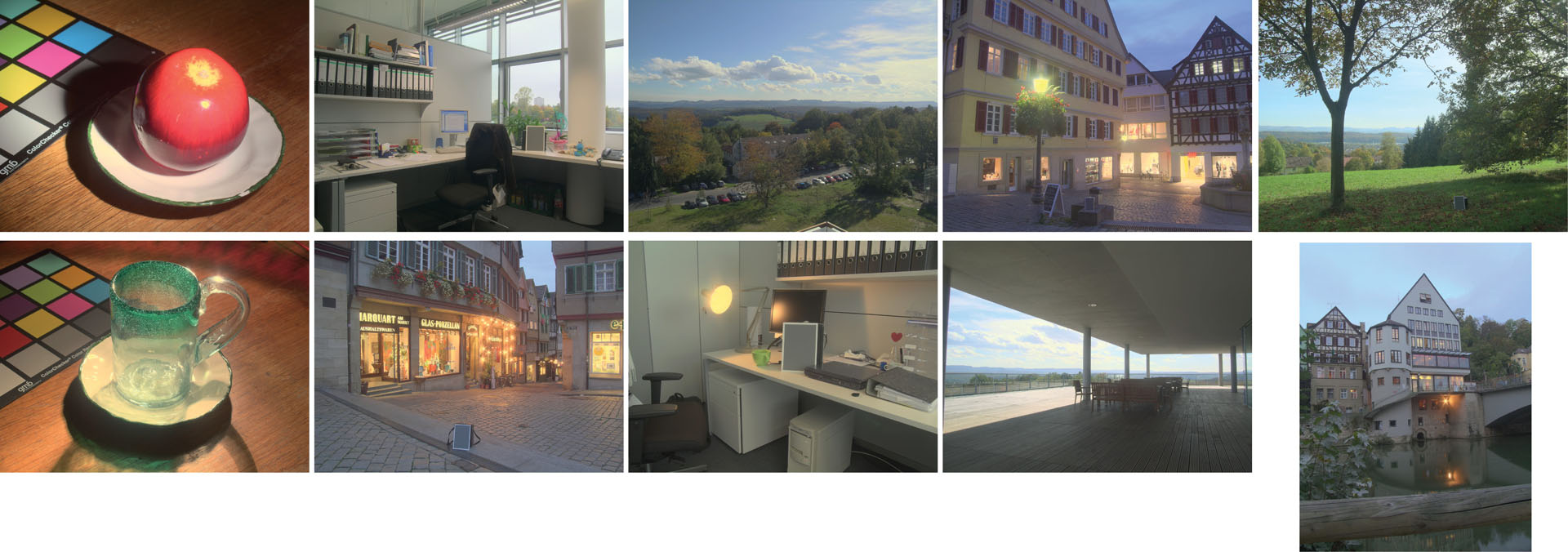“Do HDR displays support LDR content?: a psychophysical evaluation” by Akyüz, Fleming, Riecke, Reinhard and Bülthoff
Conference:
Type(s):
Title:
- Do HDR displays support LDR content?: a psychophysical evaluation
Presenter(s)/Author(s):
Abstract:
The development of high dynamic range (HDR) imagery has brought us to the verge of arguably the largest change in image display technologies since the transition from black-and-white to color television. Novel capture and display hardware will soon enable consumers to enjoy the HDR experience in their own homes. The question remains, however, of what to do with existing images and movies, which are intrinsically low dynamic range (LDR). Can this enormous volume of legacy content also be displayed effectively on HDR displays? We have carried out a series of rigorous psychophysical investigations to determine how LDR images are best displayed on a state-of-the-art HDR monitor, and to identify which stages of the HDR imaging pipeline are perceptually most critical. Our main findings are: (1) As expected, HDR displays outperform LDR ones. (2) Surprisingly, HDR images that are tone-mapped for display on standard monitors are often no better than the best single LDR exposure from a bracketed sequence. (3) Most importantly of all, LDR data does not necessarily require sophisticated treatment to produce a compelling HDR experience. Simply boosting the range of an LDR image linearly to fit the HDR display can equal or even surpass the appearance of a true HDR image. Thus the potentially tricky process of inverse tone mapping can be largely circumvented.
References:
1. Banterle, F., Ledda, P., Debattista, K., and Chalmers, A. 2006. Inverse tone mapping. In GRAPHITE ’06: Proc. of the 4th International Conf. on Computer Graphics and Interactive Techniques in Australasia and Southeast Asia, 349–356. Google ScholarDigital Library
2. Debevec, P. E., and Malik, J. 1997. Recovering high dynamic range radiance maps from photographs. In SIGGRAPH 97 Conference Proceedings, Annual Conference Series, 369–378. Google ScholarDigital Library
3. Drago, F., Martens, W. L., Myszkowski, K., and Seidel, H.-P. 2002. Perceptual evaluation of tone mapping operators with regard to similarity and preference. Tech. Rep. MPI-I-2002-4-002, Max Plank Institut für Informatik.Google Scholar
4. Durand, F., and Dorsey, J. 2002. Fast bilateral filtering for the display of high-dynamic-range images. ACM Transactions on Graphics 21, 3, 257–266. Google ScholarDigital Library
5. Gilchrist, A. L., Kossyfidis, C., Bonato, F., Agostini, T., Cataliotti, J., Li, X., Spehar, B., Annan, V., and Economou, E. 1999. An anchoring theory of lightness perception. Psychological Review 106, 795–834.Google ScholarCross Ref
6. Hoefflinger, B., Ed. 2007. High-dynamic-range (HDR) vision: Microelectronics, image processing, computer graphics. Springer Series in Advanced Microelectronics. Springer, Berlin. Google ScholarDigital Library
7. Kuang, J., Yamaguchi, H., Johnson, G. M., and Fairchild, M. D. 2004. Testing hdr image rendering algorithms. In Proc. of IS&T/SID 12th Color Img. Conf., 315–320.Google Scholar
8. Ledda, P., Chalmers, A., Troscianko, T., and Seetzen, H. 2005. Evaluation of tone mapping operators using a high dynamic range display. ACM Trans. Graph. 24, 3, 640–648. Google ScholarDigital Library
9. Meylan, L., Daly, S., and Süsstrunk, S. 2006. The reproduction of specular highlights on high dynamic range displays. In IS&T/SID 14th Color Imaging Conference.Google Scholar
10. Mitsunaga, T., and Nayar, S. K. 1999. Radiometric self calibration. In Proceedings of CVPR, vol. 2, 374–380.Google Scholar
11. Reinhard, E., Stark, M., Shirley, P., and Ferwerda, J. 2002. Photographic tone reproduction for digital images. ACM Transactions on Graphics 21, 3, 267–276. Google ScholarDigital Library
12. Reinhard, E., Ward, G., Pattanaik, S., and Debevec, P. 2005. High Dynamic Range Imaging: Acquisition, Display and Image-Based Lighting. Morgan Kaufmann, San Francisco. Google ScholarDigital Library
13. Rempel, A., Trentacoste, M., Seetzen, H., Young, D., Heidrich, W., Whitehead, L., and Ward, G. 2007. Ldr2hdr: On-the-fly reverse tone mapping of legacy video and photographs. ACM Trans. Graph. 26, 3. Google ScholarDigital Library
14. Seetzen, H., and Whitehead, L. 2003. A high dynamic range display using low and high resolution modulators. SID Digest, 1450–1453.Google Scholar
15. Seetzen, H., Heidrich, W., Stuerzlinger, W., Ward, G., Whitehead, L., Trentacoste, M., Ghosh, A., and Vorozcovs, A. 2004. High dynamic range display systems. ACM Transactions on Graphics 23, 3, 760–768. Google ScholarDigital Library
16. Seetzen, H., Li, H., Ye, L., Heidrich, W., Whitehead, L., and Ward, G. 2006. Observations of luminance, contrast, and amplitude resolution of displays. In Society for Information Display (SID), 1229–1233.Google Scholar
17. Ward, G., Rushmeier, H., and Piatko, C. 1997. A visibility matching tone reproduction operator for high dynamic range scenes. IEEE Trans. on Visualization and Comp. Graphics 3, 4. Google ScholarDigital Library
18. Yoshida, A., Blanz, V., Myszkowski, K., and Seidel, H. 2005. Perceptual evaluation of tone mapping operators with real-world scenes. In Stereoscopic Displays and Virtual Reality Systems XII. Edited by Woods, Andrew J.; Bolas, Mark T.; Merritt, John O.; McDowall, Ian E. Proceedings of the SPIE, Volume 5666, pp. 192–203 (2005)., 192–203.Google ScholarCross Ref
19. Yoshida, A., Mantiuk, R., Myszkowski, K., and Seidel, H.-P. 2006. Analysis of reproducing real-world appearance on displays of varying dynamic range. Computer Graphics Forum 25, 3, 415–426.Google ScholarCross Ref




